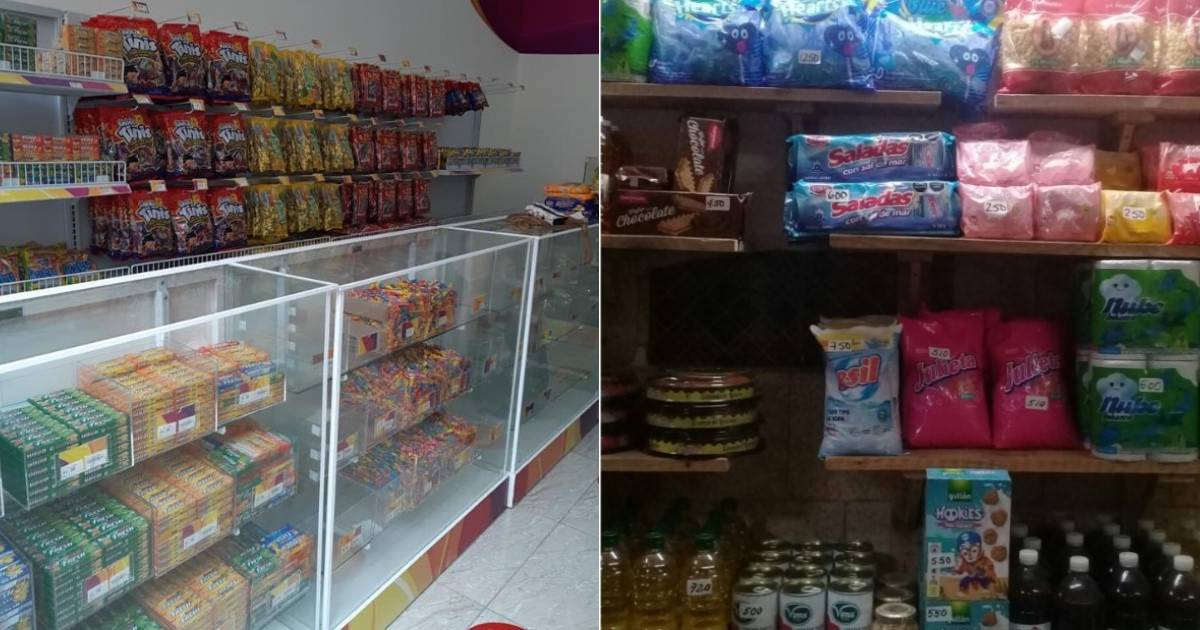Officials from the Ministry of Food Industry (MINAL) have asserted that some confectionery production on the island is financed through revenue generated from online sales platforms. Anayra Cabrera Martínez, General Director of Industrial Policy at MINAL, told the official newspaper Granma that the income obtained from sales through platforms with payments from abroad has enabled them to finance certain productions, such as the sweets available in amusement parks.
The official also mentioned that these confections are priced lower than those previously available, stating that they are directly funded by the ministry with 100% of the raw materials sourced domestically. This claim, however, does not align with the reality faced by many Cubans, including children who plead with their parents to buy sweets that are often priced beyond the average Cuban salary.
This scenario is not new in the national landscape. For several years, Cuban families have voiced their complaints about the scarce availability of these products and their high prices. In 2021, a Cuban mother lamented her inability to buy sweets for her daughter due to their dollar prices and the long lines at a Havana store.
"How much longer will we allow ourselves to be trampled?" the distressed woman wrote on Facebook after the incident. Later that year, the government was forced to remove confections from the windows of a dollar store in Guantánamo after a complaint sent to the local newspaper went viral, highlighting that many children saw the sweets but couldn't afford them, leading to tears.
This incident was widely discussed on social media and in independent press articles to illustrate the deep inequalities in Cuban society and the failed nature of the government project. Another example of exorbitant prices was seen at the Agricultural Market on 9th and F in Vedado, Havana, where a package of candies cost up to 1,250 pesos in November 2023.
At the same location and time, other confectionery prices included 600 Cuban pesos (CUP) for a packet of cookies, 1,200 CUP for a cake, and 30 CUP for a single lollipop. On January 6, during Three Kings' Day, a mother became emotional when a Cuban YouTuber known for his channel "Vámonos con Juanka" handed out candies to her children and other kids sitting in the Alameda de Paula in Old Havana.
"Did you feel happy as a mother?" the YouTuber asked after noticing the expression on the woman's face, who was sitting with her children and other kids. The woman nodded and replied, "Yes, because..." but was overcome with emotion and couldn't finish her sentence, nearly brought to tears.
This event highlights that the high prices of confections and toys in Cuba remain a sensitive issue among Cuban parents.
Understanding the Impact of High Confectionery Prices in Cuba
The following questions and answers provide further insights into the challenges faced by Cuban families due to the high prices of confectioneries and the government's role in this issue.
How are confectioneries in Cuba funded according to MINAL?
According to MINAL officials, confectioneries in Cuba are funded through revenue generated from online sales platforms with payments coming from abroad.
Why are confectionery prices still high despite government funding?
Despite government claims of funding, the high prices of confectioneries are attributed to economic mismanagement, scarcity of products, and the overall financial struggles faced by Cuban families.
What impact do high confectionery prices have on Cuban families?
High confectionery prices place a significant financial burden on Cuban families, often making it difficult for parents to afford treats for their children, leading to frustration and emotional distress.
How has the public reacted to the high prices of sweets in Cuba?
The public has expressed strong dissatisfaction with the high prices of sweets, as seen in social media posts, complaints to local newspapers, and widespread discussions highlighting the inequalities and economic challenges faced by the population.
